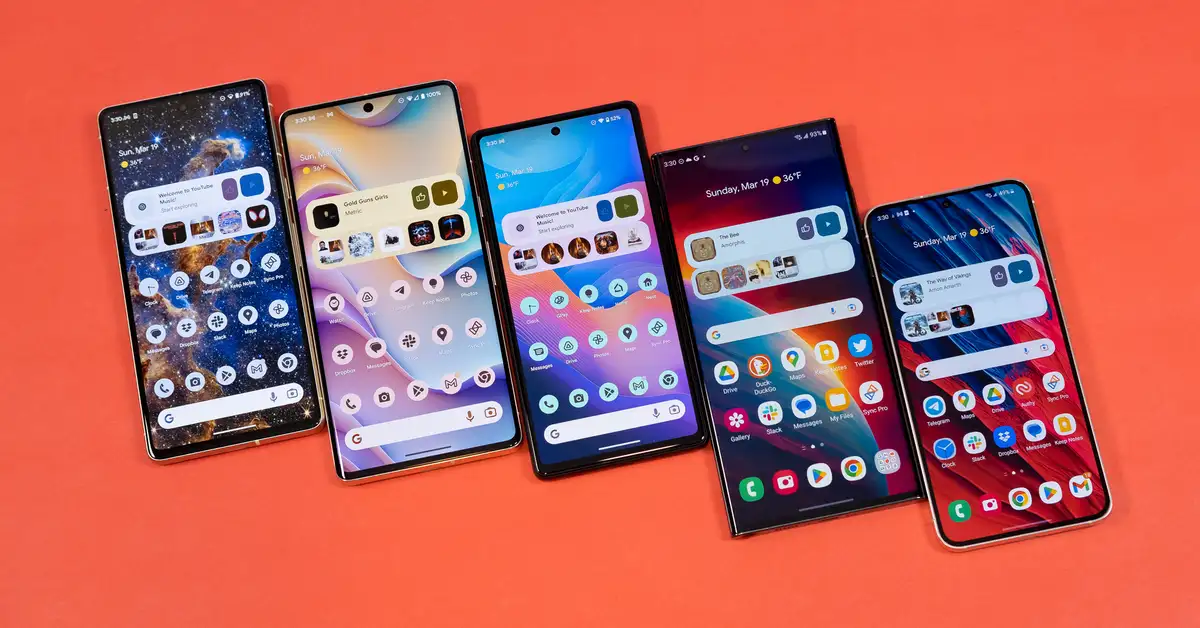In the rapidly evolving landscape of mobile technology, the longevity of a mobile phone is a pivotal consideration for users. While repurposing an old device for alternative uses, such as an alarm clock or security camera, is a possibility, there inevitably comes a time when an upgrade becomes a necessity. This article delves into the subtle signs that indicate it might be time to retire your current mobile phone and explore the considerations for choosing a more modern replacement.
Signs It’s Time to Upgrade Your Mobile Phone: A Comprehensive Analysis

1. Limited Storage Space:
One of the primary indicators that your phone is showing signs of aging is the persistent struggle for storage space. If you find yourself spending more time playing a digital version of Tetris with your phone’s free space than using it for its intended purposes, it might be time to consider an upgrade. The constant need to delete cache, uninstall applications, and make the tough decision of which memories to preserve and which to discard can turn into a daily battle.
Even with the option of using memory cards (if your phone supports them), the problem of limited storage remains a challenge. Especially with phones offering minimal storage capacities like 16 or 32 GB. For many users, even 64 or 128 GB can feel claustrophobic, particularly as these devices age and accumulate more data over the years.
2. Rapid Battery Drain:
The Achilles heel of aging mobile phones is often their battery. As the device ages, the battery’s capacity naturally degrades, resulting in a reduced lifespan. A once reliable phone that could comfortably last a full day may now struggle to make it through half a day. Leading to an increased reliance on power banks or the constant need for a nearby charging plug.
While changing the battery is a potential solution, the decision is contingent upon factors such as the service cost and the overall value of your mobile phone. If the cost of replacing the battery surpasses the device’s current market value, it becomes a strong indication that it’s time to consider investing in a new, more efficient device.
3. Sluggish Performance:
Over time, mobile phones tend to become slower due to a variety of factors. While there are measures users can take to optimize performance. Such as clearing cache or closing background applications, there are limits to what these efforts can achieve. While recent mid-range or high-end phones tend to age more gracefully, entry-level phones may experience a noticeable decline in speed.
Despite attempts to address performance issues, such as updates and application launches, if the time spent waiting exceeds the time spent using the phone, it’s a clear sign that an upgrade is in order. The frustration caused by a sluggish device can be alleviated by investing in a more modern phone that aligns with current performance standards.
4. Persistent Overheating:
Another symptom closely related to sluggish performance is persistent overheating. When a mobile phone is working harder than it is designed for, it tends to overheat, especially during simple tasks. This continuous overheating not only leads to discomfort for the user but also poses a risk to the battery’s health.
The heat generated indicates that either the phone is being pushed beyond its capabilities for normal use or it’s unable to cope with the performance demands of contemporary applications. Recognizing this symptom serves as a clear signal that the device is struggling to keep up with modern requirements. Making it an opportune time to explore the market for a more capable replacement.

5. Physical Damage:
Perhaps one of the most overt signs that it’s time to retire your mobile phone is physical damage. Whether it’s a screen riddled with cracks, non-functional buttons, or a charging port that only works when the cable is inserted at the perfect angle, significant physical damage is an unmistakable indicator of wear and tear.
While repairing a damaged phone is an option, the cost analysis becomes crucial. In many cases, the expense of repairing extensive damage may exceed the phone’s current market value. The decision to either repair or replace should be a pragmatic one. Considering the long-term viability and functionality of the device.
6. App Compatibility Issues:
In the ever-evolving landscape of mobile applications, older phones may face compatibility issues with the latest software updates. While this symptom may be less common, users may find that certain apps no longer work on their aging devices. This serves as a practical indication that the phone’s hardware and software are no longer keeping up with industry standards.
The lack of compatibility may limit the user’s access to essential applications, leading to a compromised user experience. This gradual obsolescence of apps is a clear indication that the phone is reaching the end of its lifecycle. Prompting users to consider upgrading to a more current device that aligns with the latest technological advancements.
7. Limited Accessory Availability:
A less common yet notable sign is the difficulty in finding compatible accessories. Such as covers or protectors, for your aging mobile phone. As physical and online stores gradually phase out accessories for older models, users may find themselves facing challenges in securing protective gear for their devices.
While the scarcity of accessories alone might not be the sole reason for upgrading, it serves as a subtle reminder that your phone is becoming obsolete. This can prompt users to evaluate their overall mobile experience, considering factors such as functionality, security, and aesthetics. And make an informed decision about upgrading to a newer device.
Conclusion:
In conclusion, recognizing the signs that indicate your mobile phone is in need of retirement is essential for a seamless transition to a more modern and capable device. From storage limitations to battery issues, performance slowdowns, and physical damage, each symptom contributes to the overall assessment of your phone’s health. By staying attuned to these indicators, users can make informed decisions about when it’s time to bid farewell to their current mobile companion and welcome a more technologically advanced replacement.
This comprehensive analysis serves as a guide for users to assess the state of their mobile phones and navigate the complex decision-making process involved in upgrading to a device that meets their evolving needs in the dynamic world of mobile technology.





